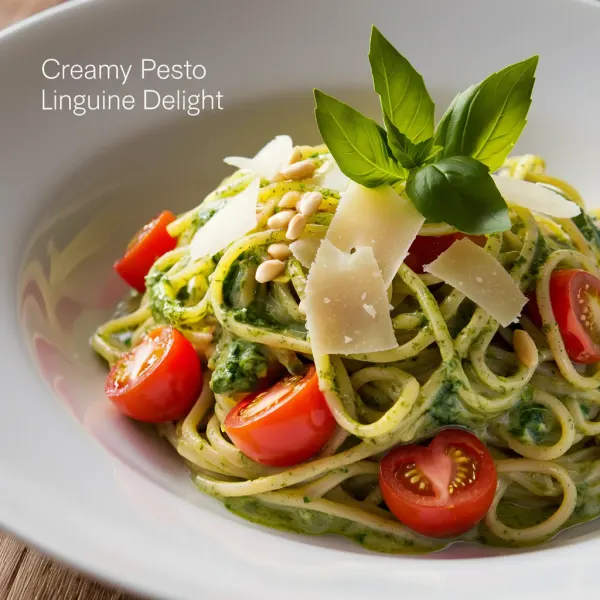
 25 minutes
25 minutesA simple yet elegant pasta dish featuring creamy pesto and freshly grated Parmesan cheese, ready in under 30 minutes.


Dry Pasta
0 lb
Pesto, prepared
cups
to taste
to taste
1. Boil Pasta
Begin by bringing a large pot of salted water to a rolling boil. Add ¾ pound of your chosen dry pasta and cook it until it reaches that perfect al dente texture—tender yet still firm to the bite. This usually takes about 8-10 minutes but keep an eye on it.
2. Reserve Pasta Water
Once the pasta is cooked, reserve a cup of the hot cooking water before draining the pasta using a colander. This reserved pasta water is a secret weapon for creating a smooth, creamy sauce.
3. Combine Pasta and Pesto
Next, transfer the drained pasta to a large, warm bowl or back into the pot you used for cooking. Add 1½ cups of prepared pesto to the pasta, and toss everything together. The warmth of the pasta will help the pesto to coat evenly.
4. Create Creamy Sauce
Gradually mix in about ½ cup of the reserved hot pasta water. The starch in this water will help to loosen the noodles and create a creamy sauce that clings beautifully to each strand of pasta. If the sauce looks too thick, you can add a bit more of the reserved water until you reach the desired consistency.
5. Adjust Seasoning
Taste the pasta and adjust the seasoning with a pinch of salt if necessary. The goal is to have a well-seasoned, flavorful dish.
6. Serve with Parmesan
Finally, plate the pasta onto serving dishes and generously garnish with freshly grated Parmesan cheese. The cheese not only adds a rich, salty finish but also enhances the creamy texture of the dish.
Use fresh basil leaves, high-quality extra virgin olive oil, pine nuts, fresh garlic, Parmesan, and a touch of lemon juice for a more vibrant and nuanced flavor.
The pasta water should taste as salty as the sea to properly season the pasta.
Keep some pasta water before draining to adjust your sauce consistency and help it cling to the pasta.
Pasta should have a slight chew to stand up better to the sauce.
Warm pesto gently to maintain its vibrant color and flavor, avoiding simmering or boiling after adding cream.




Comments (0)